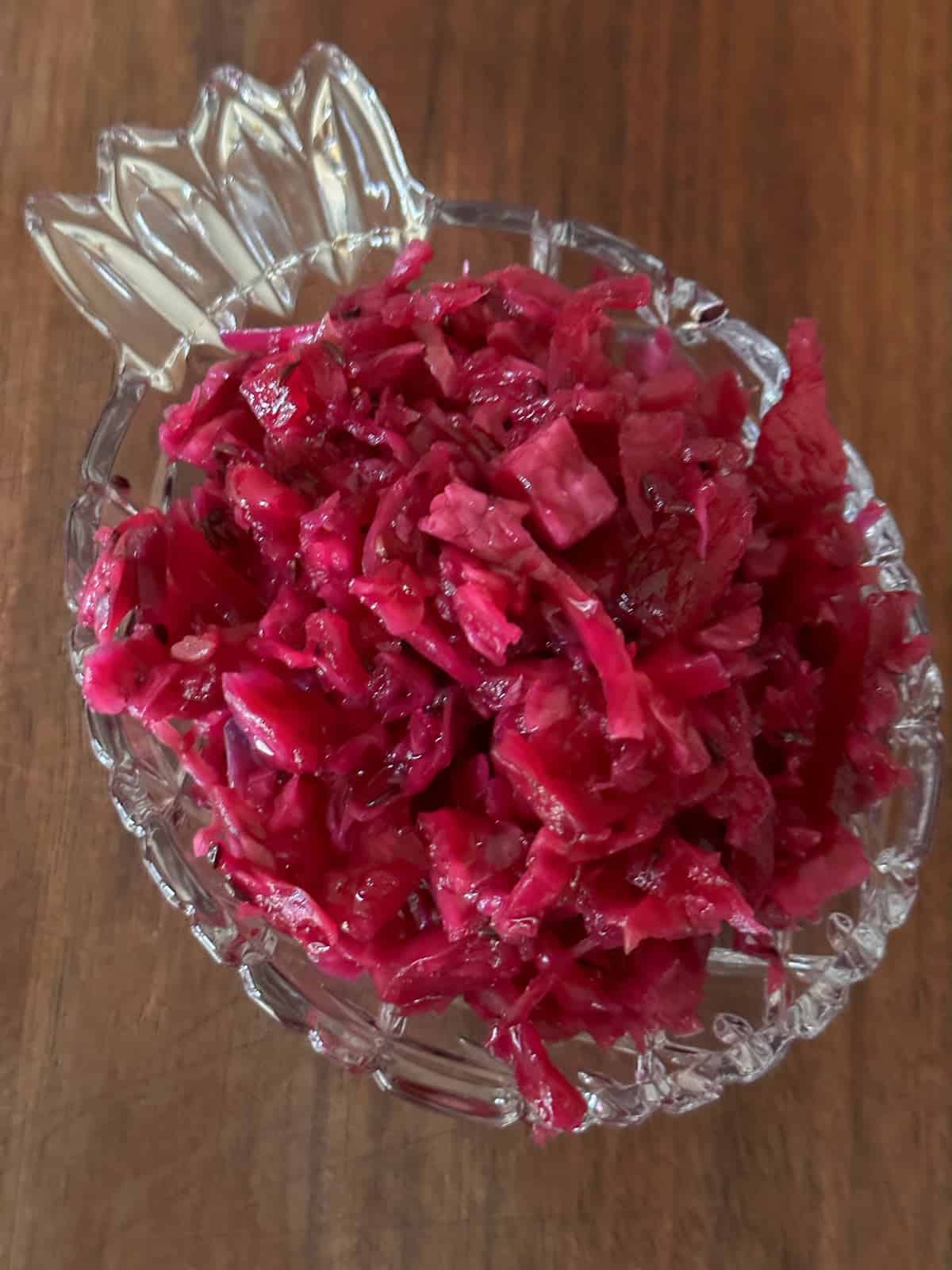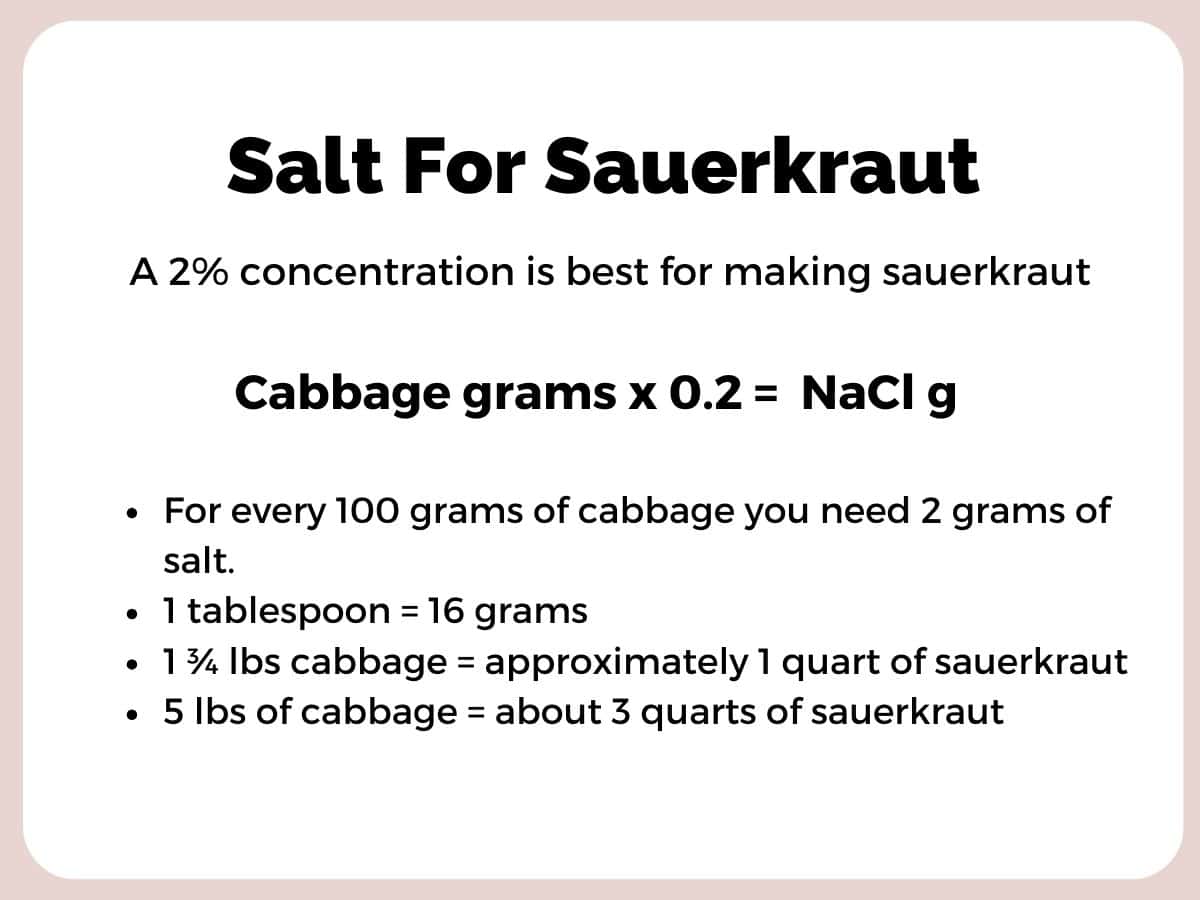The Ultimate Guide to Making Red Cabbage Sauerkraut
Welcome to the ultimate guide on how to make red cabbage sauerkraut at home! This recipe is a must-try if you’re a fan of tangy and flavorful fermented vegetables. In this comprehensive guide, we’ll walk you through the step-by-step process of turning fresh red cabbage into delicious sauerkraut right in your own kitchen.
Not only is homemade sauerkraut a tasty addition to any meal but it’s also packed with gut-friendly probiotics that can support your digestive health. Plus, making your own sauerkraut allows you to control the ingredients and customize the flavors to your liking.
Whether you’re a beginner or an experienced fermenter, this guide has got you covered. We’ll cover everything from choosing the right cabbage to preparing and fermenting it properly. To ensure success, you’ll learn about the essential equipment needed, fermentation timeframes, and troubleshooting tips.

Health benefits of red cabbage sauerkraut
Sauerkraut not only adds a burst of flavor to your meals but also offers numerous health benefits. Fermented foods like sauerkraut are rich in probiotics, which are good bacteria that support a healthy gut.
Probiotics aid in digestion, enhance nutrient absorption and boost the immune system. Additionally, red cabbage contains high levels of antioxidants and anti-inflammatory compounds, making it a nutritious addition to your diet. Incorporating homemade cabbage sauerkraut into your meals can improve your gut health and strengthen your immune system.
Getting started with making red cabbage sauerkraut
Before you begin making red cabbage sauerkraut, gather the necessary equipment. You’ll need:
- Large glass jar or crock: I use 1-quart ball jars.
- Sharp chef’s knife or mandoline slicer
- Weights: Glass weights keeps the cabbage submerged in its juices during fermentation.
Choosing the right ingredients for red cabbage sauerkraut
To make red cabbage sauerkraut, you’ll need just a few simple ingredients.
- Red cabbage: Start with one medium-sized red cabbage, which should yield approximately two to three pounds of sauerkraut. Organic red cabbage is important to ensure the highest quality and minimize pesticide exposure.
- Tart Apple: The apple adds a little sweetness to the ferment. Shred the apple or slice it with a fine julienne blade on the mandoline slicer.
- Onion: Onion adds an extra savory punch. Any kind of onion is fine to use in this recipe.
- Salt: You’ll also need high-quality sea salt or non-iodized kosher salt, as iodized salt can hinder fermentation.
- Spices: Optionally, you can add flavorings like caraway seeds, juniper berries, or garlic cloves to enhance the taste of your sauerkraut.
Step-by-step guide to making red cabbage sauerkraut
- Remove the outer leaves from the cabbage and set them aside. Cut the cabbage in half, remove the core, and thinly slice the cabbage using a knife or mandoline slicer. Place the sliced cabbage in a large bowl.
- Add salt to the cabbage, approximately one to two tablespoons per head of cabbage, depending on personal preference. Massage the salt into the cabbage with clean hands, squeezing and kneading it for about 10 minutes until it starts releasing its liquid.
- Slice the apple and the onion. Add it to the cabbage. Add caraway seeds and toss to combine.
- Transfer the salted cabbage and its liquid into the vessel, packing it tightly to eliminate air pockets. Pour any remaining liquid into the vessel, completely submerging the cabbage.
- Place one or two of the reserved outer cabbage leaves on top of the sliced cabbage to act as a barrier, preventing exposure to air. Place a weight on top of the leaves to keep the cabbage submerged.
- Cover the fermentation vessel with a breathable cloth or lid to allow gases to escape while keeping out airborne contaminants. Store the vessel in a cool, dark place, ideally between 65-75°F (18-24°C).
- Allow the red cabbage sauerkraut to ferment for at least one to two weeks, depending on your desired taste and texture. Check the sauerkraut regularly, removing any mold or scum that may form on the surface.
- Once the fermentation period is complete, taste the sauerkraut to ensure it has reached your preferred level of tanginess. If desired, transfer the sauerkraut to smaller jars and refrigerate to slow the fermentation process.

The fermentation process
The fermentation process for red cabbage sauerkraut typically takes one to two weeks, depending on temperature and personal preference.
During this time, beneficial bacteria convert the natural sugars in the cabbage into lactic acid, giving sauerkraut its distinctive tangy flavor. It’s important to monitor the sauerkraut regularly, ensuring that it remains submerged in its own juices to prevent spoilage.
The longer the fermentation period, the more pronounced the sourness of the sauerkraut will become. Experiment with different times to find your perfect balance of flavor and texture.

Stages of Lacto Fermentation
- Brine: Vegetables are submerged in a salt solution. The salt concentration is unfavorable for aerobic bacteria (bad bacteria) and favorable for anaerobic bacteria (good bacteria.) Lactic Acid Bacteria (LAB) is predominant in sauerkraut and kimchi.
- Production of Acid: The LAB starts to use the sugar from the vegetables to create lactic acid. The acidic solution acts to preserve the cabbage. CO₂ is released during the process, so the jars must be vented or burped.
- Continued Lactic Acid Production: The sauerkraut will continue to ferment until it has used all the sugars available. This can take a very long time. The length of time that you choose to ferment depends on flavor preference. Once the sauerkraut reaches the flavor you like, you can pack it up and put it into the fridge. This will slow the fermentation down considerably.
common issues When Making Sauerkraut
While making red cabbage sauerkraut is a relatively straightforward process, some common issues may arise during fermentation.
Mold growth, soft or mushy cabbage, and off-putting odors can indicate problems with the fermentation process.
Possible issues that might contribute to unsuccessful sauerkraut
- Improper cleaning of equipment: It’s important that the jars and all equipment used for fermentation are clean and sanitary. Boiling glassware will kill unwanted bacteria. Using vinegar to soak is also effective. Avoid antibacterial dish soap. These may leave a residue that prevents proper fermentation.
- Improper salt concentration: The proper salt concentration in your brine is crucial for proper fermentation.

Storing and preserving red cabbage sauerkraut
Once your red cabbage sauerkraut has fermented to your desired taste, transfer it to smaller jars and refrigerate to slow the fermentation process.
Properly stored sauerkraut can last up to several months in the refrigerator, although it may continue to ferment and develop a stronger flavor over time.
Consider canning or freezing your sauerkraut in airtight containers to extend the shelf life. Remember always to use clean utensils when serving sauerkraut to prevent contamination.

Creative ways to use red cabbage sauerkraut in recipes
Red cabbage sauerkraut is a versatile ingredient that can add a tangy twist to a variety of dishes.
- Enjoy it as a condiment on sandwiches, hot dogs, or burgers.
- Use it as a topping for salads, tacos, or grain bowls to add a bright burst of flavor.
- Incorporate sauerkraut into traditional recipes like pierogies or sausages for a unique twist.
- Get creative by experimenting with sauerkraut in soups, stews, and baked goods to add depth and complexity to your culinary creations.
Making red cabbage sauerkraut at home is a rewarding and enjoyable process that allows you to customize the flavors to your liking. Following this comprehensive guide will equip you to embark on your sauerkraut-making journey.
Remember to choose the freshest ingredients, maintain proper hygiene, and monitor the fermentation process closely. With a little patience and experimentation, you’ll soon be savoring your own tangy and delicious homemade red cabbage sauerkraut.
Enjoy the process, and happy fermenting!
More Pickles & Fermentation Recipes
Check out the full category page for pickles and fermentation and find your next crunchy, mouthwatering recipe.
Spicy Carrots and Jalapeños
Escabeche (Mexican Pickled Vegetable Recipe)
Spicy Jalapeño Sauerkraut
Cucumber Kimchi Pickles
Did you love this recipe?
Please leave a 5-star 🌟🌟🌟🌟🌟 rating and a comment below ⬇️
I love hearing from you in the comments; & your feedback helps other readers and helps me continue offering recipes at no cost. Drop a comment 👇
Tangy Homemade Red Sauerkraut Recipe
Equipment
- fermentation weights (affiliate link)
- airlock lids (affiliate link)
- wide mouth mason jars (affiliate link)
Ingredients
- 1 head red cabbage, thinly sliced
- 1 tart apple, thinly sliced
- 1 white onion, thinly sliced
- 1 teaspoon caraway seeds
- 1 tablespoon unrefined salt, adjust the salt to weight
Instructions
- Remove the outer leaves from the cabbage and set them aside. Cut the cabbage in half, remove the core, and thinly slice the cabbage using a knife or mandoline slicer. Place the sliced cabbage in a large bowl.1 head red cabbage
- Add salt to the cabbage, approximately one tablespoon per 800 grams of cabbage, depending on personal preference. Massage the salt into the cabbage with clean hands, squeezing and kneading it for about 10 minutes until it starts releasing its liquid.1 tablespoon unrefined salt
- Slice the apple and the onion. Add it to the cabbage. Add caraway seeds and toss to combine.1 tart apple, 1 white onion, 1 teaspoon caraway seeds
- Transfer the salted cabbage and its liquid into the vessel, packing it tightly to eliminate air pockets. Pour any remaining liquid into the vessel, completely submerging the cabbage.
- Place one or two of the reserved outer cabbage leaves on top of the sliced cabbage to act as a barrier, preventing exposure to air. Place a weight on top of the leaves to keep the cabbage submerged.
- Cover the fermentation vessel with a breathable cloth or lid to allow gases to escape while keeping out airborne contaminants. Store the vessel in a cool, dark place, ideally between 65-75°F (18-24°C).
- Allow the red cabbage sauerkraut to ferment for at least one to two weeks, depending on your desired taste and texture. Check the sauerkraut regularly, removing any mold or scum that may form on the surface.
- Once the fermentation period is complete, taste the sauerkraut to ensure it has reached your preferred level of tanginess. If desired, transfer the sauerkraut to smaller jars and refrigerate to slow the fermentation process
Laura’s Tips + Notes
- Salt: Use unrefined salts such as fine sea salt, Himalayan salt, or Redmond’s real salt. Never use iodized table salt for fermenting.
YOUR OWN NOTES
Sign In to add your own private notes




















